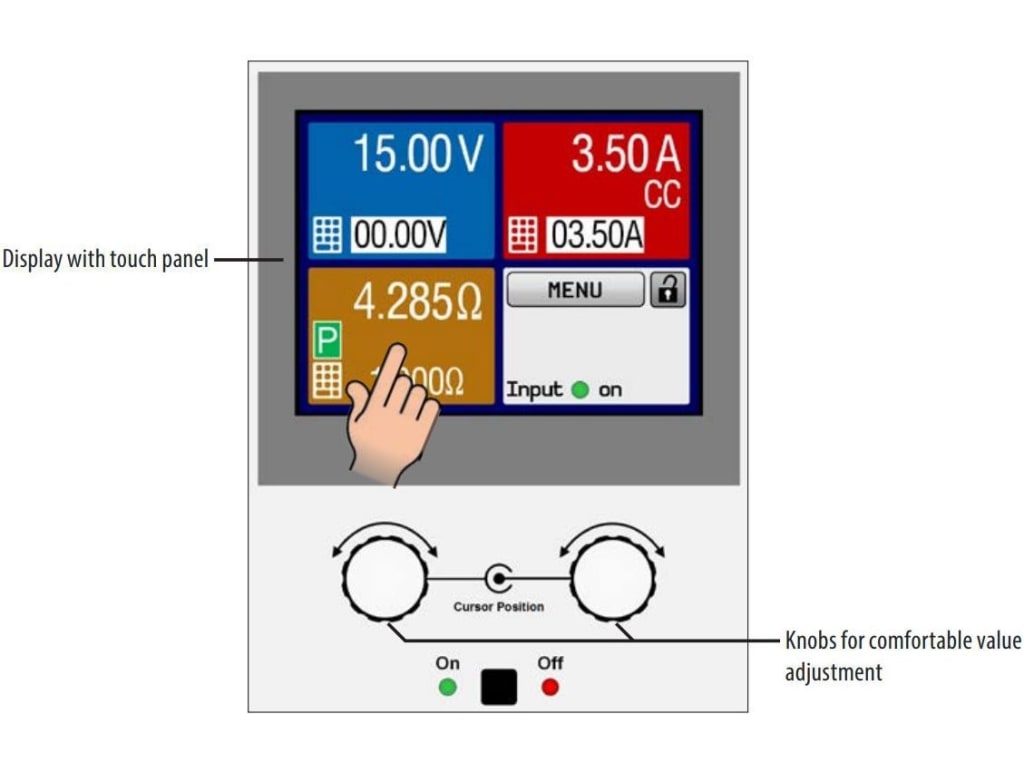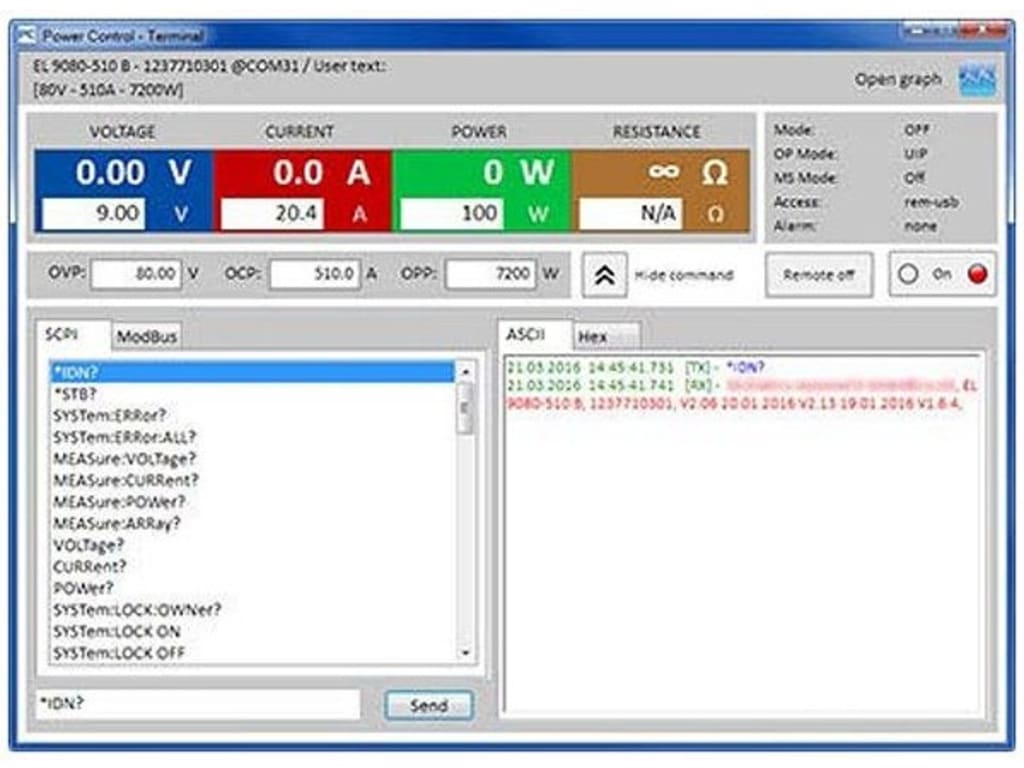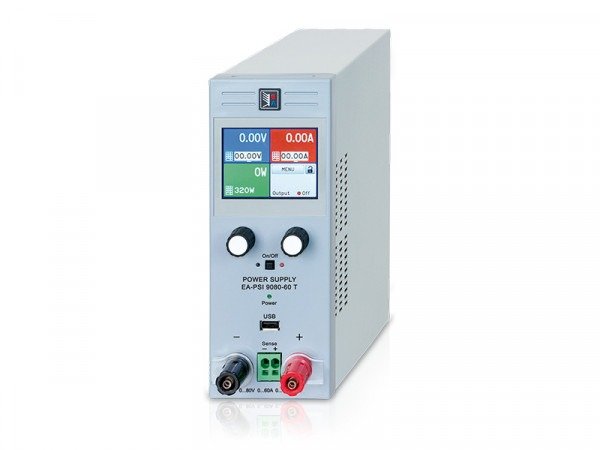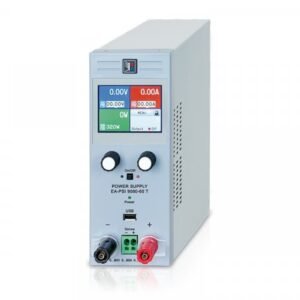No products in the cart.
Need help? Call us:
+1 (833) 763-7837
Menu
Categories
- Accessories
- Air Purification Accessories
- Antennas
- Attenuators
- Barcode Scanners
- Batteries and Chargers
- Bottles and Dispensers
- Cables - Misc
- Carrying Straps, Lanyards and Harnesses
- Carts
- Case and Cart Accessories
- Cases
- Cathodic Protection Accessories
- Coaxial
- Crimper Accessories
- Datacom Accessories
- Dry Block Bath Inserts
- EMI Accessories
- Enclosure Accessories
- FIber Optic Accessories
- Fiber Optic Cables
- Gas Detection Accessories
- General Accessories
- GPIB Adapters
- Heating Elements
- Hipot Accessories
- Hoses - Miscellaneous
- HVAC Accessories
- Induction Heater Accessories
- Input Cards
- Jacks /Adapters /Plugs /Clips /Terminators/Coaxial
- Jobsite Storage and Cabinets
- Knockout Accessories
- Lab Accessories
- LCR Test Fixtures
- LED and LCD Displays
- Manuals
- Material Handling Accessories
- Microphones
- Microscope Accessories
- Motors
- Options
- Pinhole/Holiday Detector Accessories
- Plumbing Accessories
- Precision Measuring Instrument Accessories
- Pressure Calibrator Modules
- Printers and Printing Supplies
- Probes
- Rack Mounts and Stands
- Repair Parts and Fuses
- Scale Accessories
- Shunts
- Software
- Soldering Accessories
- Spectrum Analyzer Accessories
- Static Control Accessories
- Switch and Semiconductor Modules/Access
- Test Fixtures
- Test Leads and Instrument Accessory Kits
- Thermal Imager Accessories
- Training and Education
- Underground Utility Location Accessories
- Vibration Accessories
- Video Accessories
- Voltage Transformer
- Warranty and Calibration
- Amplifiers / Preamps / Preamplifiers
- Audio Equipment
- Automotive Test Tools
- Battery Testing
- Blower Door and Duct Testing
- Borescopes / Boroscopes
- Clamp Meters
- Cleanroom
- Color and Appearance
- Conduit Benders
- Current Sensors
- Datacom and Networking Products
- Dataloggers Data Acquisition
- Decade Boxes
- Distance Meter
- Electrical Parts and Products
- Cable and Wire
- Cable Reels
- Electrical Cord
- Electrical Jumpers and Pigtails
- Electrical Parts
- Electrical Plugs and Connectors
- Line Splitters
- Lockout / Tagout
- Outlet Boxes
- Pulling Products
- Pushbutton Pendant Stations
- Receptacle Testers
- Temporary Power Distribution
- Terminal Blocks and Strips
- Terminals and Crimps
- Wall Plates
- Wire Management
- Wire Ties
- Work Lighting and String Lighting
- Enclosures and Boxes
- Environmental Testers / Physical Property
- Anemometer / Air Flow
- Barometers and Altimeters
- Chlorine Tester
- Dissolved Oxygen Meter / Fluoride
- EMF / ELF Meter
- Heat Index Monitors
- Humidity Meters
- Hygrometers
- Moisture Meters
- Nuclear Radiation Monitors
- PH / ORP Meters
- Psychrometer
- Refractometers / BRIX
- Scales / Weight
- Sound Level Meters
- Stopwatches / Timers / Clocks
- Water Quality Accessories
- Water Quality Meters
- Weather Measurement
- Wind Tunnels
- Flow Measurement
- Force / Torque / Hardness Meters
- Gas Detection
- Ground Testers
- Health and Safety
- HVAC Equipment and Instruments
- Automotive RRR Machines
- Brazing
- Combustion Analyzers
- Hose Adapters, Valves and Parts
- HVAC - Testing - Adjusting - Balancing
- HVAC Equipment - Misc
- HVAC Manifolds and Gauges
- HVAC Vacuum Pumps
- Refrigerant Leak Detectors
- Refrigerant Recovery Machines
- Refrigerant Recovery Tanks
- Smoke Pump Test Kits
- Tubing Tools
- Vacuum Gauges
- Hydraulic Cylinders
- Indoor Air Quality
- LCR Meters / Impedance Measurement Products
- Leakage Detectors
- Life Sciences Equipment
- Autoclaves and Sterilization
- Bunsen Burners
- Centrifuges
- Cold Storage
- Colony Counters
- Dry Block Heaters and Cooling Blocks
- Environmental Test Chambers
- Flame Photometers
- Flocculators
- Fluidized Bed Baths
- Gel Imaging Electrophoresis
- Glassware Washers-Dryers
- Heating Mantles / Electromantles
- Homogenizers
- Incubators
- Kjeldahl Apparatus
- Lab Apparatus - Misc
- Laboratory Ovens
- Laboratory Pumps
- Laboratory Water Purification Systems
- Magnetic Bead Based Purification
- Melting Point Apparatus
- Mixers Rotators and Stirrers
- Pipettes
- Reaction Station
- Recirculating Chillers / Coolers
- Refrigerated Heating Circulators
- Rotary Evaporators
- Shakers and Rockers
- Slide Warmers
- Spectrophotometer
- Thermal Cycler / PCR
- Titrators
- Water Baths and Liquid Baths
- Logic Analyzers
- Materials Testing
- Megohmmeter / Insulation Resistance Testers
- Micro-Ohmmeter / Milliohmmeter
- Microscopes
- Multimeters
- Network Analyzer
- Oscilloscopes
- Panel Meters
- Personal Protective Equipment
- Phase / Motor / Transformer Testing
- Power Measurement
- Power Supplies
- Process / Calibration
- Programmers / IC and RAM Testers
- Protocol Analyzers
- Prototyping
- Radiometric
- Reliability / Preventative Maint / Rotational
- RF, Microwave, EMI
- Safety Testing / Surge Testing
- Signal Generators / Counters
- Signal Level Meters - CATV / CCTV / Satellite
- Solar Analyzers
- Soldering Equipment
- BGA Rework Station
- Chemicals
- Cleaning Pins and Drills
- Depaneling Systems
- Desoldering Equipment/Rework Stations
- Desoldering Irons
- Dispensing Equipment
- Flux
- Flux Remover
- Fume Extraction
- Hot Air Guns
- Hot Air Pencils
- Lead Forming Equipment
- Nitrogen Generation
- Nozzles
- PCB Supports and Holders
- Pre-Heater
- Solder
- Solder Wick
- Soldering Equipment
- Soldering Irons
- Soldering Pots
- Soldering Robots
- Soldering Stands
- Soldering Stations
- Soldering Tip Cleaners
- Soldering Tip Thermometers
- Soldering Tweezers
- Sponges and Brass Wool
- Thermal Wire Strippers
- Tips
- Vacuum Pick-Up Tools
- Sporting / Hunting / Law Enforcement Optics
- Static Control
- Surveying / Construction Measurement
- Thermal Imagers
- Thermometers
- Thickness Gauges
- Tools
- Blackeners
- Cable Cutters
- Cable Strippers
- Cable Tie Guns
- Combination Squares
- Conduit Tools
- Crimpers
- Cutters
- Cutting Tools
- Datacom / Fiber Optic Tools
- Drill Bits and Sets
- Drill Rod
- Dry Lubricants
- Electric Screwdrivers
- Feeler Gage
- Fiber Optic Cable Tools and Fiber Scopes
- Flashlights and Headlights
- Ground Flat Stock
- Hex Drivers, Torx Drivers
- Hose Benders
- Hose Clamps
- Hot Melt
- HVAC Service Tools
- Insulated Tools
- Keystock
- Knockout Tools
- Layout Fluid
- Level Measurement
- Maintenance Kits
- Multi-Tools
- Other Hand Tools
- Pliers
- Pneumatic Hand Tool Operators
- Power Tools
- Probes & Scribes
- Punch & Die Sets
- Punchdown Tools
- Remote Hydraulic Pumps
- Screwdrivers
- Shims & Shim Stock
- Sockets & Ratchets
- Spatulas
- Telecom Service Tools
- Telescopic Tools
- Threaded Rod
- Tool Kits
- Tool Wrap
- Tweezers
- Vises
- Wire
- Wire Strippers
- Wrenches & Wrench Sets
- Toys / Cool Stuff
- Transmission Line/Station Testing
- Cable Testing
- Circuit Breaker Testers
- Corona Detection
- Dielectric Oil Testing
- High Current Detectors / Indicators
- High Voltage Detectors / Indicators
- Hot Sticks
- Phasing Sticks
- Primary Injection Test Equipment
- Safety Equipment
- Secondary Injection Test Equipment
- SF6 Gas Leak Detectors
- Transformer Testing/TTR
- Transmission Cable Height Meters
- Video Distribution Equipment
- Video Test Equipment
- Voltage / Continuity and Non-Contact Testers
- Wire Tracers / Circuit Breaker Tracers
- Workbenches
Elektro-Automatik EA-EL 9500-08 T 400W – Programmable Electronic DC Load, 400W/500V/8A
Brand:
18 people are viewing this product right now
$2,255.00
Shipping calculated at checkout.
Estimated delivery:4 days
500V/8A/400W Programmable Electronic DC Load with touchscreen and integrated function generator
- Programmable DC load
- Multilingual color touch panel
- True function generator
- Adjustable protections: OVP, OCP, OPP
- Operation modes: CV, CC, CP, CR
- USB port as standard
- Ethernet & analog interface optional
- SCPI & ModBus RTU supported
- Control software (Windows)
- LabView Vis
SKU:
Elektro-Automatik EA-EL 9500-08 T 400W
Tags: Electronic Loads, Power Supplies
Categories: Electronic Loads
Have any Questions?
Feel free to Get in touch
Guarantee Safe and Secure Payment Checkout
Description

Elektro-Automatik EA-EL 9500-08 T 400W
- Power: 400W
- Voltage: 500V
- Current: 8A
- Touch screen
- Function generator
Programmable Electronic DC Load, 400W/500V/8A
The Elektro-Automatik EA-EL 9000 T are programmable DC loads with an easy-to-use touchscreen and built-in function generator. The EA-EL 9000 T are available in three power ratings, as shown below:
| Model | Power | Power @ 40°C | Voltage | Current | Resistance | UMin for IMax (1 |
| EL 9080-45 T | 0…600 W | 0…550 W | 0…80 V | 0…45 A | 0.12…40 Ω | ~ 2.2 V |
| EL 9200-18 T | 0…500 W | 0…500 W | 0…200 V | 0…18 A | 1…340 Ω | ~ 2 V |
| EL 9500-08T | 0…400 W | 0…400 W | 0…500 V | 0…8 A | 6…2000 Ω | ~ 6.5 V |
(1 Minimum DC input voltage to supply for the load to achieve the max. input current
All models support the four regulation modes constant voltage (CV), constant current (CC), constant power (CP) and constant resistance (CR). The core of the control circuit is a fast microprocessor that provides helpful features, including a true function generator with common functions such as sine, rectangle or triangle waves, as well as an arbitrary function. The color TFT touch panel offers the intuitive manual operation, similar to smartphones and tablet computers.
Response times during the control of the devices via analog or digital interface have been improved by ARM processor-controlled hardware, compared to older electronic load series.
Display and handling
Set values and actual values of input voltage, current and power are clearly represented on the graphic display. The color TFT screen is touch-sensitive and can be intuitively used to control all functions of the device with just a finger.
Set values of voltage, current, power or resistance can be adjusted using the rotary knobs or entered directly via a numeric pad. To prevent unintentional operations, all operation controls can be locked.

Battery test
For purposes of testing all kinds of batteries, such as for example constant current or constant resistance discharging, the devices offer a battery test mode. It counts values for elapsed testing time and consumed capacity (Ah) and energy (Wh).
Data recorded by the PC during tests with EA Power Control can be exported as Excel table in CSV format and analyzed later in MS Excel or similar tools and even visualized as a discharge diagram.
For a more detailed setup, there is also an adjustable threshold to stop the battery test on low battery voltage, as well an adjustable maximum test period.
Power derating
The devices of the EA-EL 9000 T series are equipped with thermal derating in order to avoid overheating when operating in the maximum power range. The lower the ambient temperature and the better the cooling, the higher the power that the load can take. The nominal intake power before the de-rating starts is defined at 25°C ambient temperature.
Remote control and connectivity
For remote control, there is by default a USB interface port available on the rear of the devices. As an option, a 3-way system can be installed by the user simply by plugging an electronic board, which holds a USB, an Ethernet and an analog interface.
Another USB port, located on the front side, is intended for USB sticks in order to load and save functions and user profiles.
Windows users can profit from the free software “EA Power Control”. It offers a feature called “Sequencing”, where the device is controlled through a semi-automatic table in CSV format. This table represents a simple test procedure and can be created and edited in MS Excel or other CSV editors and then imported into the software tool.
This software also allows for the control of up to 20 units at once with an optional feature called “Multi Control” (licensed, not free of charge).


Optional analog interface
A galvanically isolated analog interface can be installed optionally and subsequently, located on the rear of the device. It offers analog inputs to set voltage, current, power and resistance from 0…100% through control voltages of 0 V…10 V or 0 V…5 V. To monitor the DC input voltage and current there are analog outputs with 0 V…10 V or 0 V…5 V. Also, several inputs and outputs are available for controlling and monitoring the device status.
Function generator
All models within this series include a function generator that can generate typical functions, as displayed in the figures below and apply them to either the input voltage or the input current. The generator can be completely configured and controlled by using the touch panel on the front of the device, or by remote control via one of the digital interfaces.
The predefined functions offer all necessary parameters to the user, such as Y offset, time/frequency or amplitude, for full configuration ability.

In addition to standard functions, this base generator can be used for the creation and execution of complex sets of functions, separated into up to 99 sequences. These can be used for testing purposes in development and production. The sequences can be loaded from and saved to a standard USB flash drive via the USB port on the front panel, making it easy to change between different test sequences.
A fictional example of a complex function (40 sequences) as it can be realized with the arbitrary generator. The function can be created on the device or externally and then loaded or saved:


Power Supplies/Electronic Loads Template | |
|---|---|
| Watts | 400 Watts |
| Max Current | 8 A |
| Max Voltage | 500 V |
| Min Current | 0 A |
| Min Voltage | 0 V |
| Programable | Yes |
Product General Attributes | |
| Shipping Weight | 17 LBS |
Be the first to review “Elektro-Automatik EA-EL 9500-08 T 400W – Programmable Electronic DC Load, 400W/500V/8A”
You must be logged in to post a review.
Manuals/Guides
ManualsSpec Sheets
Related products
Sale
Global Specialties 1420 – Variable AC Power Supply, 0-150 VAC
Our team of knowledgeable professionals is here to help you make informed decisions. Whether you need product recommendations, technical support, or guidance on your purchase, we're just a click away.
Contact Us Now:
📧 sales@nestesinstruments.com
📞 +1 (833) 763-7837
Let us assist you in finding the perfect solution!
Contact Us Now:
📧 sales@nestesinstruments.com
📞 +1 (833) 763-7837
Let us assist you in finding the perfect solution!








Reviews
There are no reviews yet.